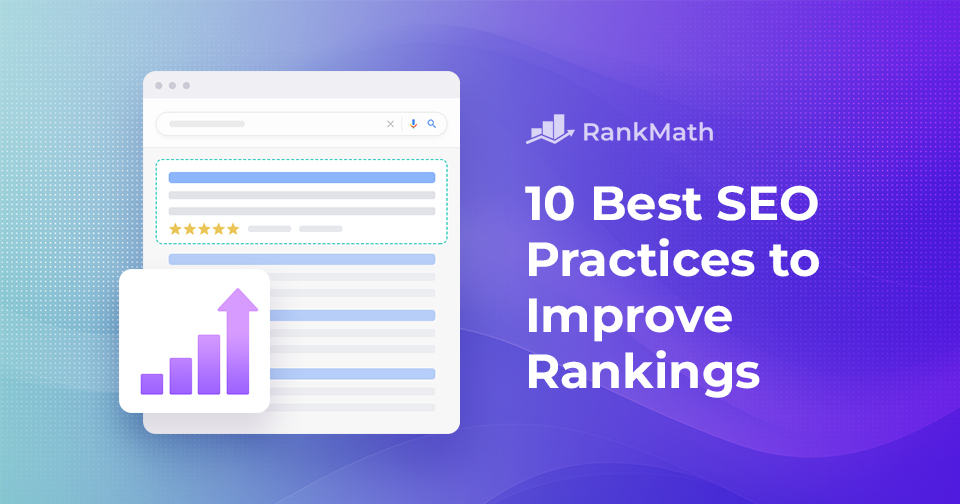We’re living in the age of AI, and keeping up with the latest SEO practices has never been more important.
In our Future of Search report, over 700 WordPress SEO professionals shared the insights of how they are adapting to AI. Interestingly, 71% of them said AI gives them their biggest advantage in search. That tells you something: the game is changing, and you don’t want to be left behind.
If you want to grow your website, boost traffic, and stand out in search results, following the right SEO practices is essential.
In this post, I’ll share 10 of the most effective strategies that you can start applying right away. So, let’s get started.
Table Of Contents
- What Are the Best SEO Practices?
- Best SEO Practices
- Align Your Content With Search Intent
- Use Your Primary Keyword Correctly
- Write Compelling Title Tags and Meta Descriptions
- Optimize Your Images
- Add Internal Links
- Earn Backlinks to Build Authority
- Improve User Experience
- Create Useful Content With E-E-A-T
- Reduce Website Load Time
- Monitor Your Results With Google Search Console
- Frequently Asked Questions
- Wrapping It Up
1 What Are the Best SEO Practices?
Best SEO practices are a set of guidelines and strategies aimed at optimizing a website to improve its visibility in search engine results.
The higher your page ranks, the greater the likelihood that your audience will click through to your content.
Why?
Data reveals that securing the top spot in search engine rankings yields a noteworthy click-through rate (CTR) of 39.8%. This is more than double the CTR for the second position, which stands at 18.7%, and nearly four times the CTR for the third position, at 10.2%.
Hence, it’s necessary to follow the best SEO practices.
These SEO practices evolve in response to changes in search engine algorithms and user behavior. Some of these SEO practices include keyword research, quality content, on-page optimization, page speed optimization, technical SEO, backlink building, etc.
2 Best SEO Practices
Let us now discuss the SEO practices that’ll help improve your search engine rankings.
2.1 Align Your Content With Search Intent
One of the best SEO practices you can follow is making sure your content matches search intent. In simple terms, this means creating content that answers exactly what your audience is looking for when they type a query into Google.
For example, let’s say someone searches for best budget smartphone. They’re not ready to buy just yet, they want to compare options. That’s a commercial query. To match this intent, you’d create a detailed review of budget smartphones, highlight features, and even suggest which ones are worth buying.
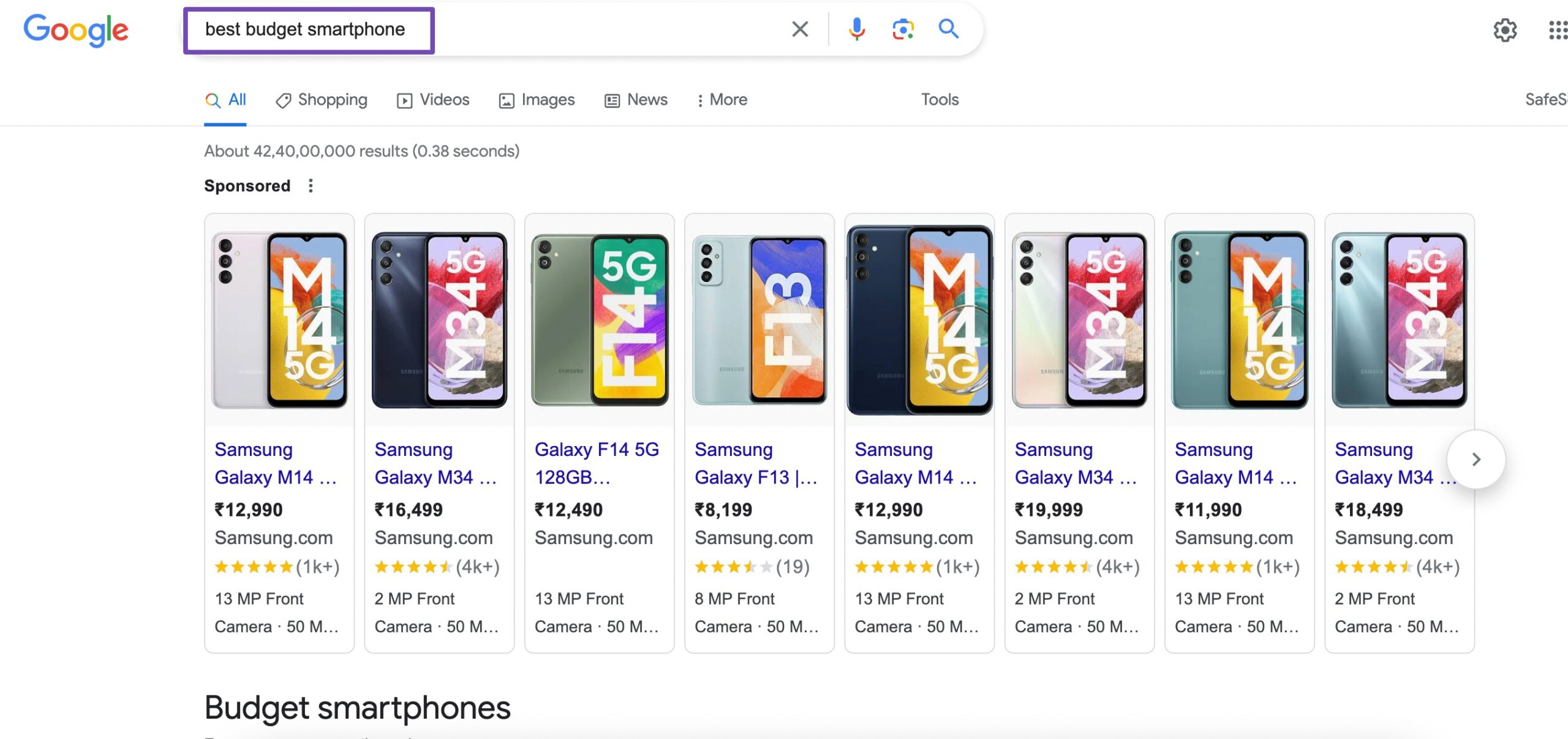
There are four main types of search intent you should know:
- Informational – The user is looking for knowledge (e.g., “What is SEO?”).
- Navigational – The user wants a specific page or brand (e.g., “Facebook login”).
- Transactional – The user is ready to buy (e.g., “buy iPhone 14 online”).
- Commercial – The user is comparing options before making a purchase.
If your content doesn’t align with these intents, it’s unlikely to rank well, even if your keywords are on point.
To make this easier, Rank Math PRO’s Search Intent feature helps you ensure your content aligns with the correct search intent of your primary focus keyword, improving your chances of ranking higher.
Right beside the primary keyword, you’ll find the Show Intent icon, as shown below.

Clicking the icon instantly reveals the keyword’s intent.
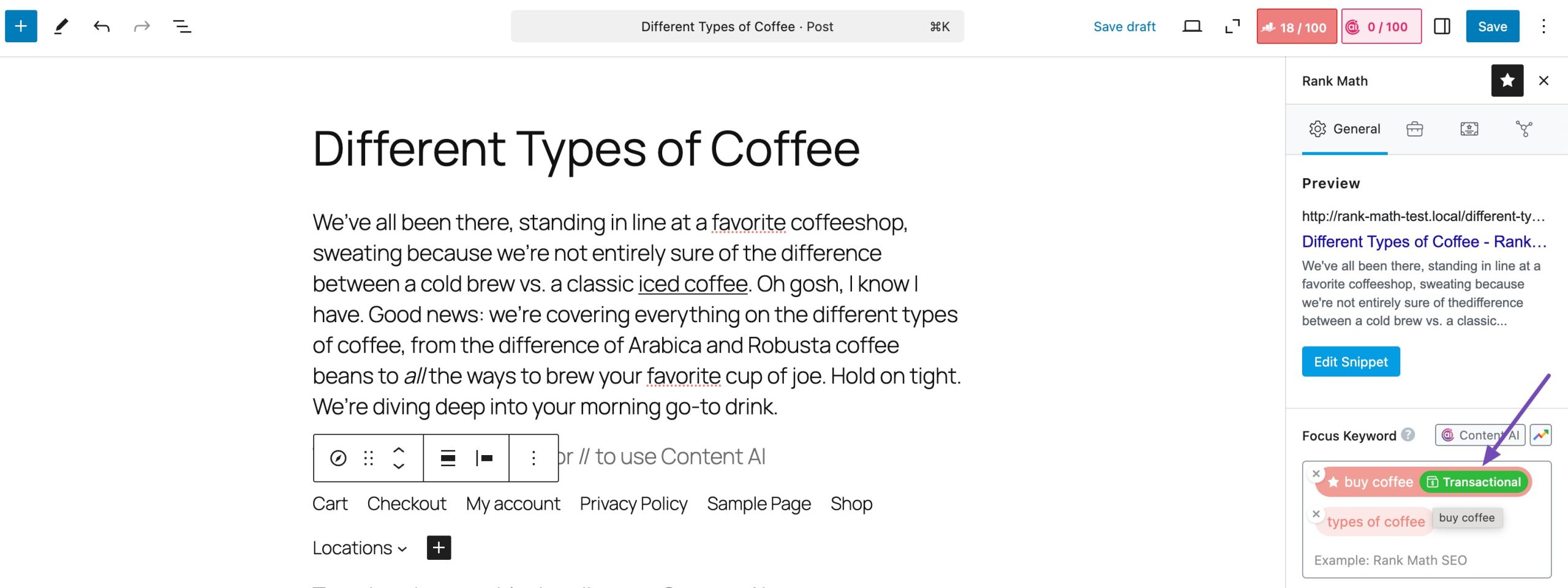
This feature applies to the first keyword in the field, marked with a star. If you want to check another keyword’s intent, simply drag it to the first position, then click the intent button.
With our tool, you can confidently optimize your content without second-guessing search intent.
2.2 Use Your Primary Keyword Correctly
Using your primary keyword the right way is one of the simplest, but most effective, SEO practices you can follow.
When you place your keyword in the right spots, you make it easy for both search engines and your audience to understand exactly what your content is about.

The strategic placement of your chosen keyword in key elements such as titles, meta descriptions, and headers is important.
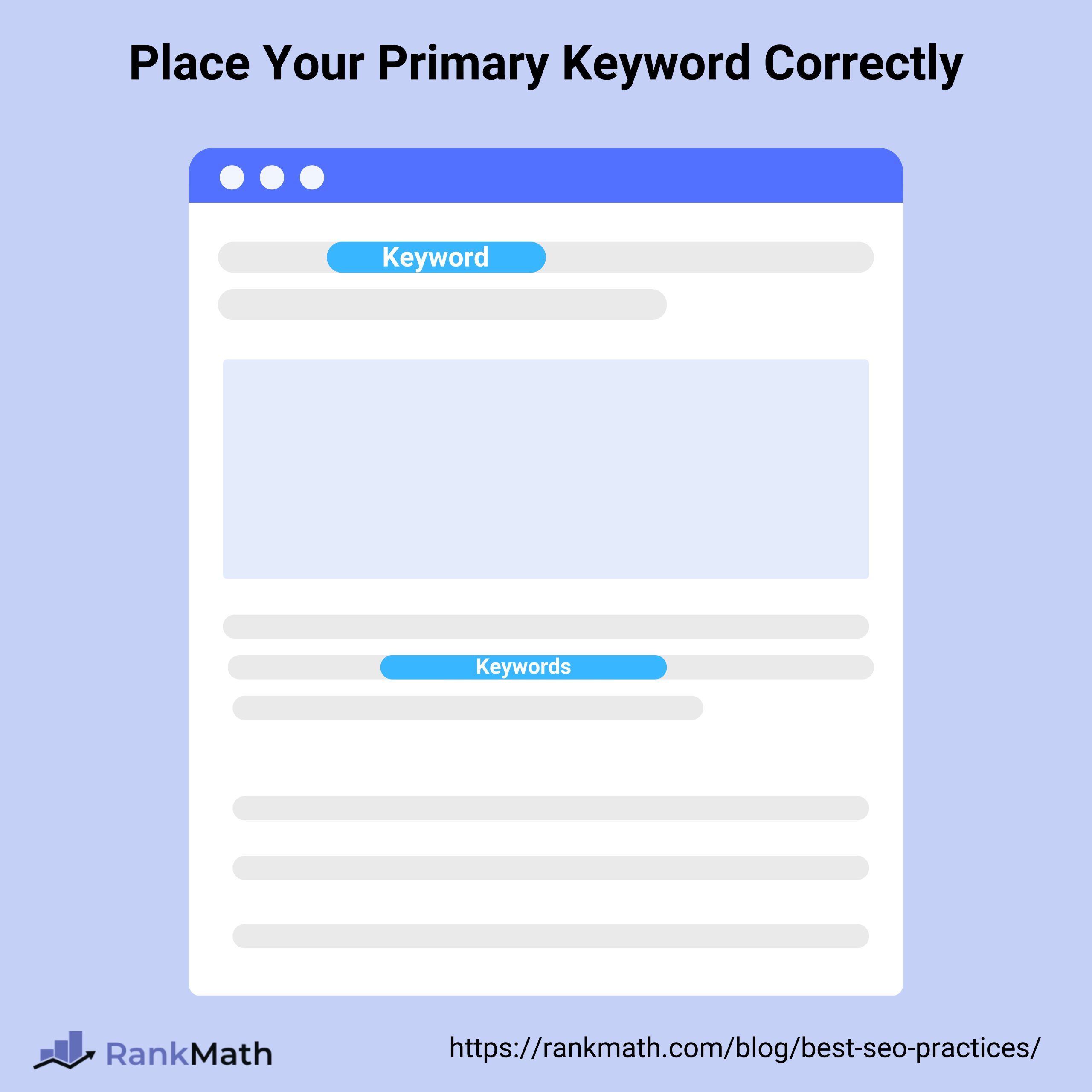
Let’s take an example. If your primary keyword is healthy smoothie recipes, you can use a title like:
Delicious and Nutritious Healthy Smoothie Recipes.
That way, anyone scanning the results (and Google itself) instantly knows the focus of your page.
But it doesn’t stop at the title. You should also place your primary keyword naturally in:
- Your meta description
- At least one header (H2 or H3)
- The opening paragraph of your content
- Sprinkled naturally throughout the article
For instance, instead of forcing it in, you can write: In this article, I’ll share a variety of healthy smoothie recipes that suit different tastes and dietary needs.
This keeps the content readable while maintaining its relevance to your chosen keyword.
If you’d like a step-by-step breakdown of how to do this you can check out our keyword research tutorial.
When you use your keywords correctly, you’ll give your content the best chance to rank higher without sacrificing readability.
2.3 Write Compelling Title Tags and Meta Descriptions
Your title tag is the very first thing visitors see in search results, it’s the clickable headline that tells them what your page is about.
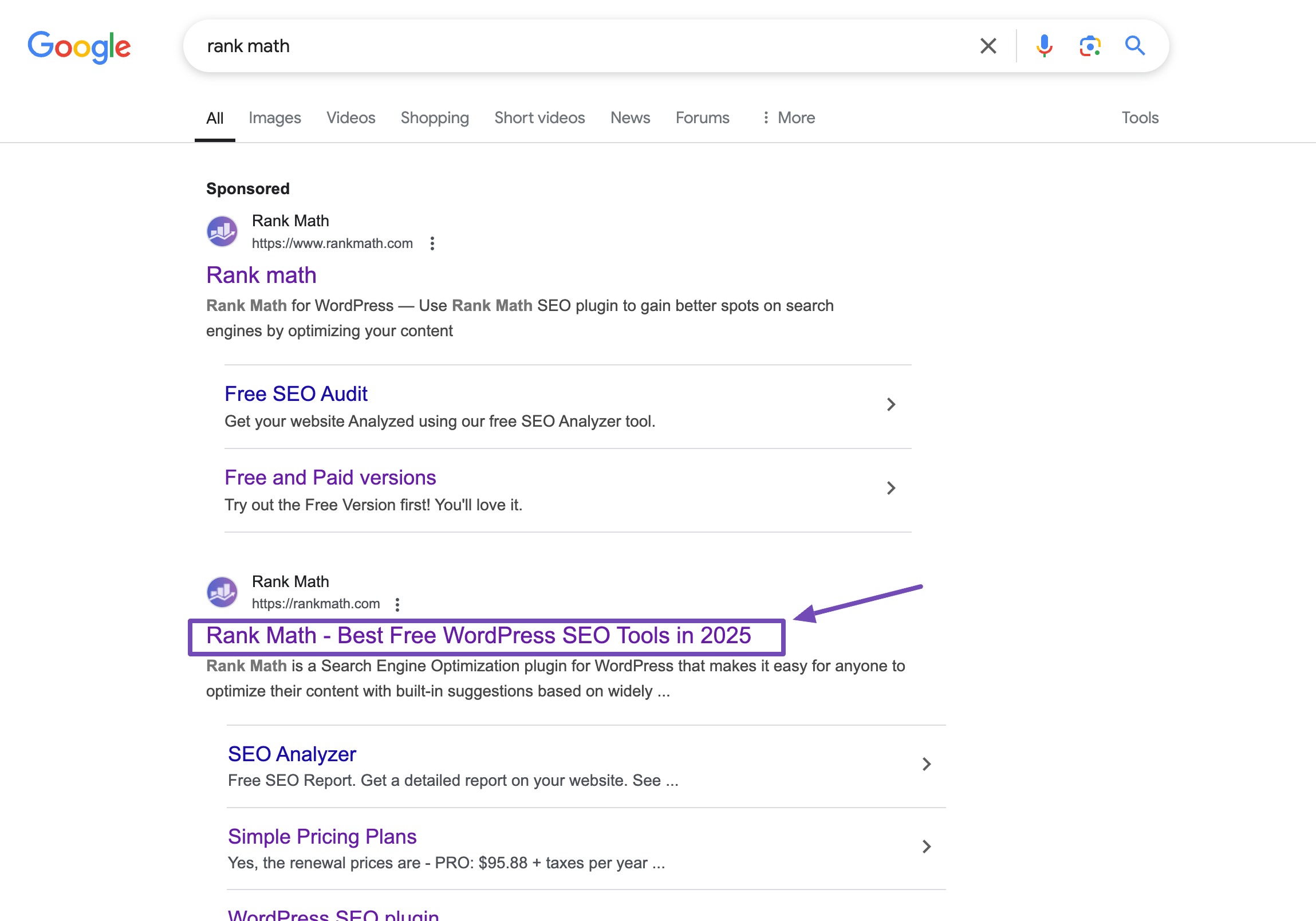
If you want clicks, you need to make it clear, concise, and keyword-friendly.
For example, if you run a travel blog, a great title can be: Essential Travel Tips for Adventurers.
This immediately tells both your audience and Google what to expect. Keep your titles under 60 characters and include your primary keyword naturally.
Now, let’s talk about meta descriptions. These short summaries appear right under your title tag in search results. While they don’t directly impact rankings, they have a huge effect on whether someone clicks your link. Ideally, your description should be around 150–160 characters, highlight your page’s value, and include a call-to-action.
Here’s what a meta description looks like in the search engine results:

The key is clearly communicating the page’s value proposition, including a compelling call-to-action, and strategically weaving in relevant keywords.
For instance, in the travel blog example, a meta description might read, “Embark on unforgettable journeys with our travel tips. From packing hacks to off-the-beaten-path destinations, discover a world of adventure,” appealing to your audience to explore the comprehensive travel insights that you offer on the page.
The good news is you don’t have to do this all manually. With Rank Math, you can easily add title tags and meta descriptions to your posts and pages.
You can even use our SEO Description tool to generate compelling meta descriptions automatically, saving you time while still improving click-through rates.
2.4 Optimize Your Images
If you’re uploading images to your site without optimizing them, you can be slowing your pages down, and that hurts both rankings and user experience. The good news? A few small tweaks can make a big difference.

First, focus on file size. Large images take longer to load, which frustrates visitors and signals to Google that your site isn’t fast. Before uploading, compress your images using tools like Imagify or TinyPNG. This way, you keep the quality sharp while reducing load time.
Next, pay attention to file names and alt text. Instead of uploading something called IMG_1234.jpg, rename it to something descriptive, like healthy-smoothie-recipe.jpg. Then, add an alt tag such as: “Green smoothie made with spinach, banana, and almond milk.” This helps search engines understand your image while improving accessibility for screen readers.
Choosing the right format also matters:
- JPEG for photos
- PNG if you need transparency
- WebP for high-quality images with smaller file sizes
- AVIF for the best compression with excellent quality
Rank Math streamlines image SEO effortlessly by automatically including ALT and title attributes into all your images.
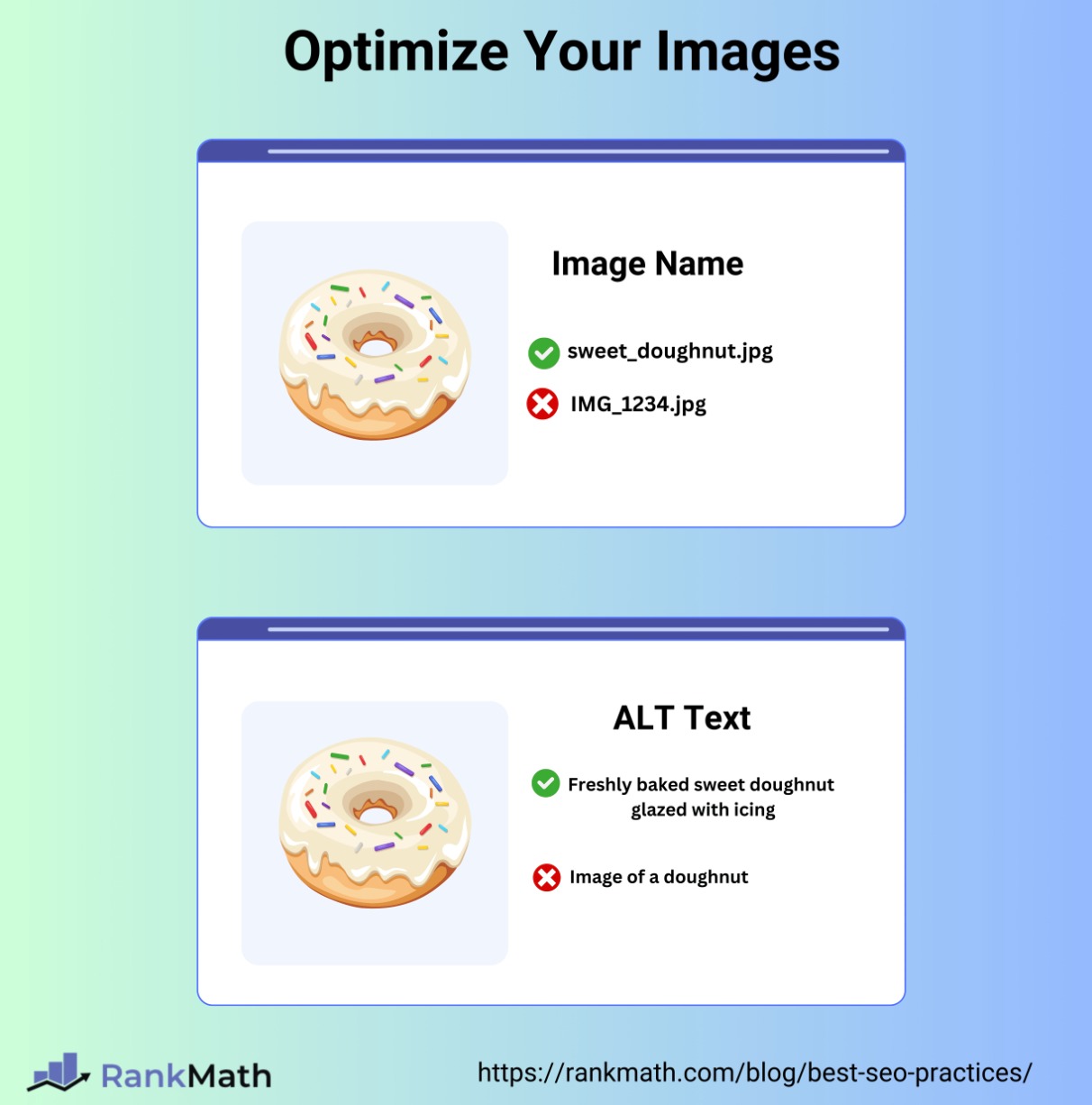
Additionally, this process doesn’t require any modification to your posts. The tags are dynamically added in real time, ensuring an easy and hassle-free optimization experience.
2.5 Add Internal Links
Internal links are one of the easiest SEO practices you can start using today, and they pay off in a big way.
By linking your pages together, you not only help your visitors discover more of your content, but you also show search engines how your pages are connected. This can boost your site’s overall authority and rankings.

For example, if you write a blog post on “Healthy Smoothie Recipes,” you could link to another article you’ve written on “Nutritional Benefits of Superfoods.” This gives your readers extra value and helps Google see that your site covers related topics in depth.
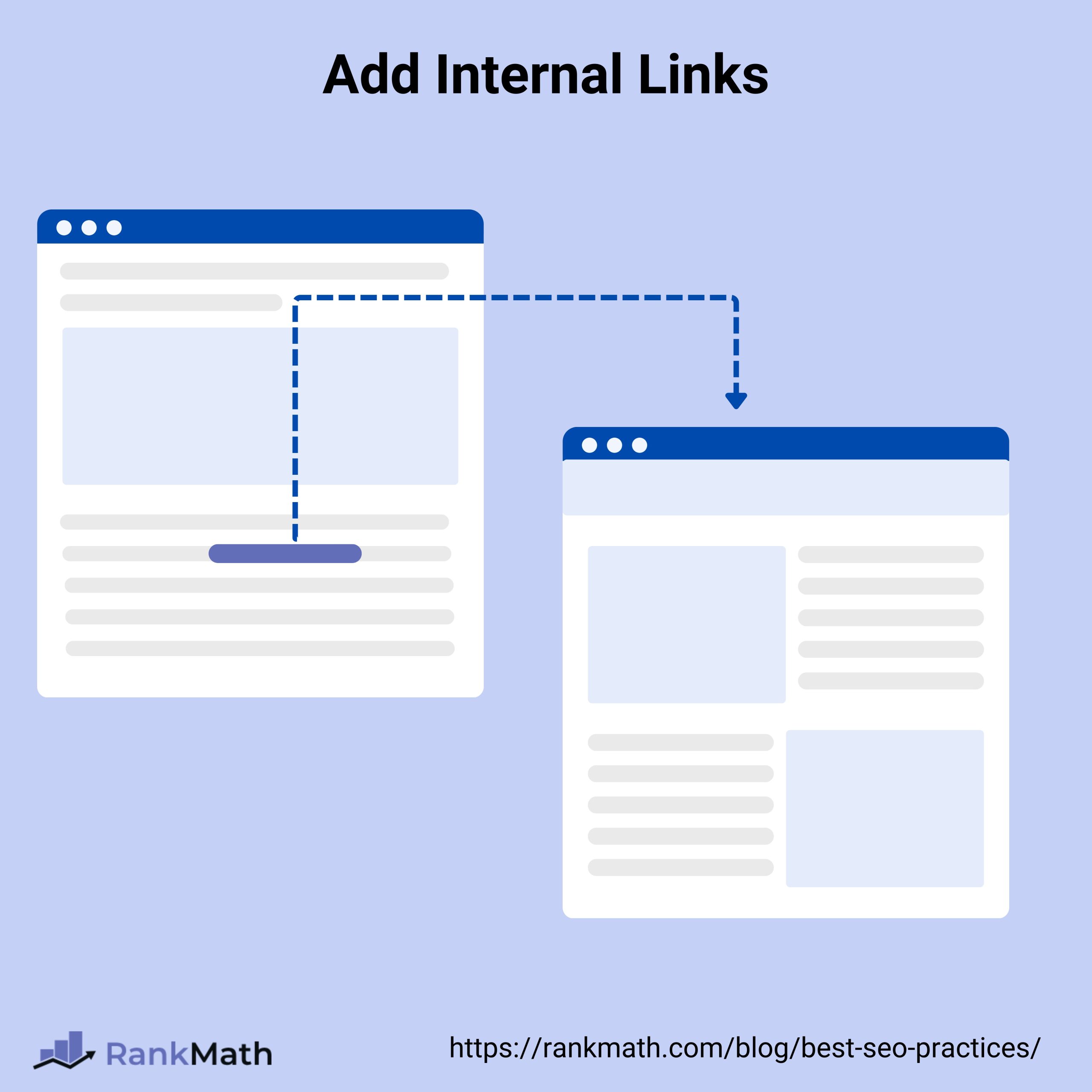
The trick is to use descriptive anchor text. Instead of writing “click here,” you might say:
- Bad: Click here
- Good: Discover the best cardio workouts
Also, keep your site’s structure in mind. Make sure your most important pages are easy to find and well-linked, so they pass authority to other related pages on your site.
2.6 Earn Backlinks to Build Authority
If internal links strengthen your site from the inside, backlinks build your authority from the outside. When reputable websites link to your content, search engines view your site as more trustworthy and valuable.
But remember, not all backlinks are created equal. One high-quality backlink from a respected site is worth far more than dozens of links from low-quality or unrelated sources.
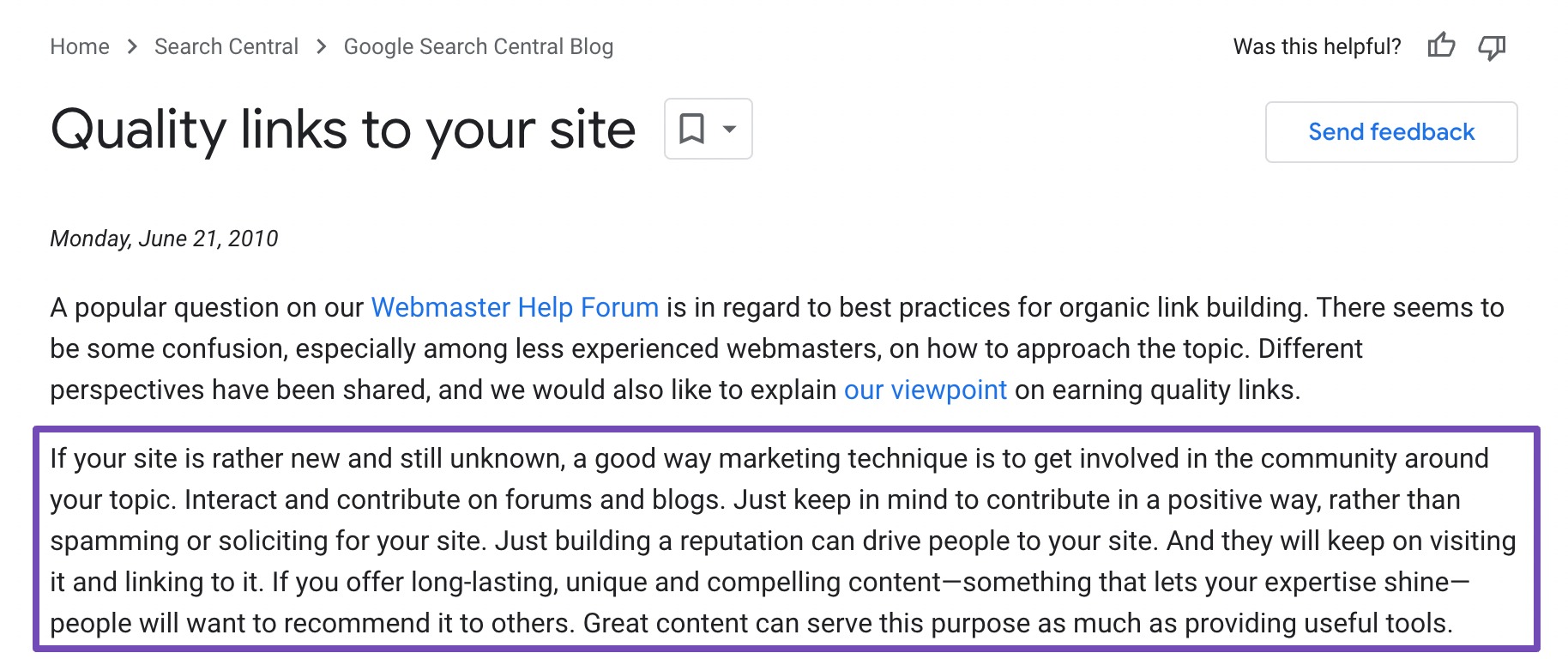
So how do you earn them? The best way is to create content that stands out, whether it’s original research, a unique perspective, or engaging visuals that others want to reference. Then, reach out to industry experts, bloggers, or influencers who might find your content useful and link to it.
Refer to our dedicated tutorial on link-building to strategically build links for your website.
2.7 Improve User Experience
When it comes to SEO, it’s not just about keywords or backlinks, your audience’s experience matters just as much. If visitors enjoy being on your site, they’ll stay longer, engage more, and Google will notice.
Think about it: if you land on a site that’s messy, hard to navigate, or slow to load, you probably click away. But if the content is easy to find, well-organized, and visually appealing, you stick around, and that’s exactly what you want for your own visitors.
Start with clear navigation. Make sure your menus are simple and your pages are easy to find. If readers can quickly get what they came for, they’re far more likely to explore other parts of your site.

Next, check how your website looks on mobile. Since most visitors browse on their phones, you need your site to be responsive on all screen sizes. Tools like Google’s PageSpeed Insights can show you where you need to improve.
Finally, focus on engagement. Add useful images, videos, or interactive elements to break up text and make your content more enjoyable. The longer your audience stays on your site, the stronger the signal you send to search engines that your content is valuable.
2.8 Create Useful Content With E-E-A-T
If you want your content to rank well, you need to think beyond keywords, you need to show Experience, Expertise, Authoritativeness, and Trustworthiness (EEAT).
When I write, I always ask myself: Does this content truly help the reader? You should do the same. If your article solves real problems, answers questions clearly, and reflects your own knowledge or experience, Google will see it as more valuable.
For instance, sharing your personal experience with a tool or process shows experience, while citing credible sources and data adds expertise. Writing under your name, building a reputation in your niche, and earning backlinks help establish authoritativeness, and being transparent, accurate, and honest builds trustworthiness.
The result? Readers will stay longer, engage more, and even share your work, which not only builds trust with your audience but also boosts your rankings.
Refer to our dedicated tutorial on E-E-A-T Optimization and create content for both your audience and search engines.
2.9 Reduce Website Load Time
You’ve probably clicked away from a slow-loading site before, right? That’s exactly why Google pays so much attention to speed, it’s a big part of user experience.
If your site takes too long to load, visitors won’t wait around. Common culprits include large image files, too many plugins, too much code, or even weak hosting.
You can fix this by compressing images, removing unnecessary plugins, or using a caching plugin like WP Rocket. The faster your site loads, the happier your visitors will be, and the better your chances of ranking higher.
Refer to our dedicated tutorial to optimize your website’s page loading speed with various speed optimization techniques.
2.10 Monitor Your Results With Google Search Console
Once you’ve put these SEO practices into action, you need to track what’s working, and that’s where Google Search Console comes in.
Inside the Performance report, you can see which keywords bring visitors to your site, which pages get the most clicks, and even your average position in search results.
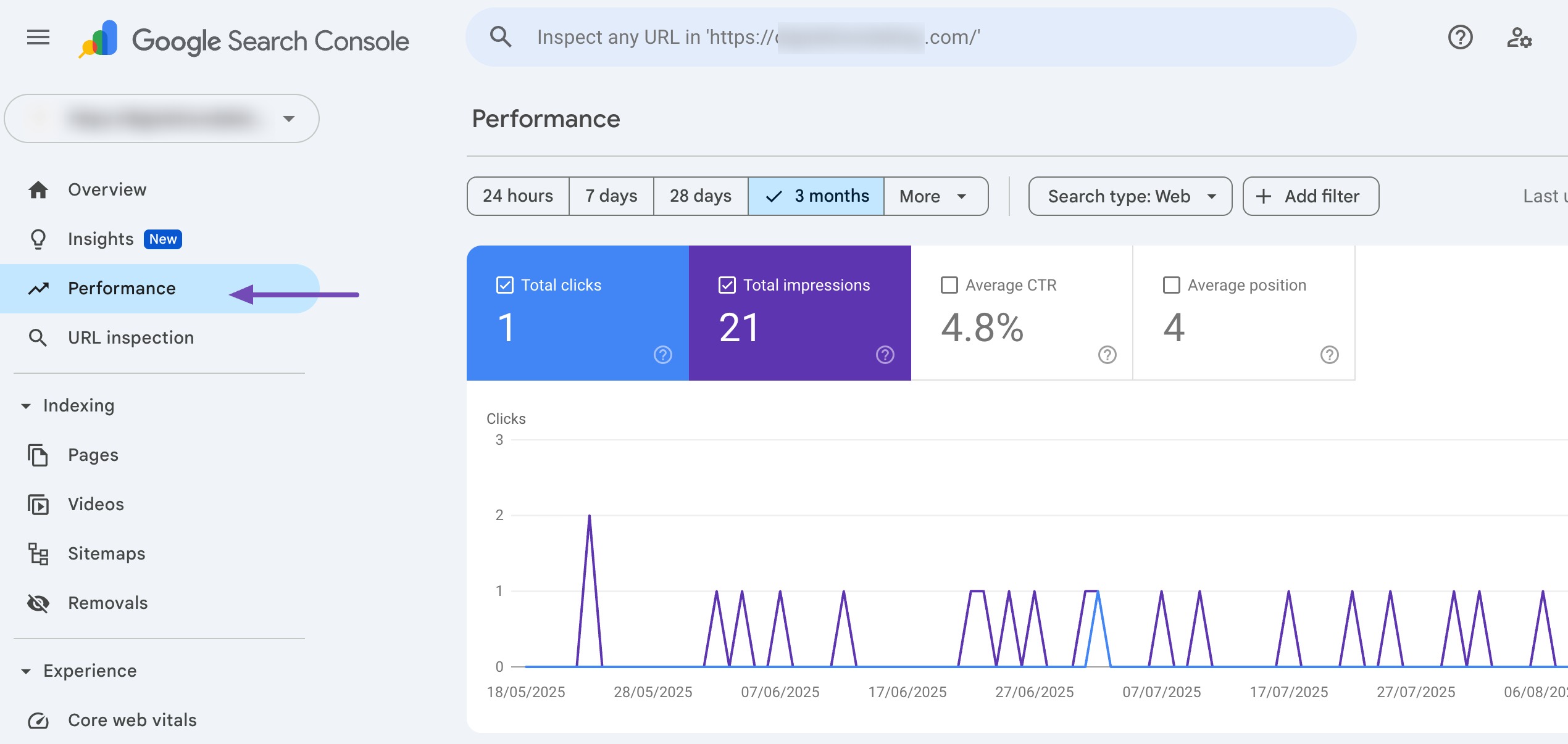
You’ll also find the Index Coverage report, which shows if Google is having trouble crawling or indexing your pages.
By addressing these issues, such as fixing crawl errors or resolving indexing problems, you can ensure that your content is properly understood and ranked by search engines. This SEO practice of regularly monitoring and addressing such issues contributes to a healthier and more optimized website.
3 Frequently Asked Questions
What is the importance of user experience in SEO?
User experience is a significant ranking factor. Search engines aim to deliver the best results to users, so a positive user experience, including easy navigation and relevant content, contributes to higher rankings.
How do I measure the success of my SEO efforts?
Use tools like Google Analytics and Google Search Console to monitor organic traffic, keyword rankings, click-through rates, and other relevant metrics. Regularly analyze this data to assess the impact of your SEO strategies.
Can I expect my website to automatically achieve high rankings by adhering to best SEO practices?
Simply following SEO practices does not ensure immediate success in search engine rankings. The outcome depends on various factors, such as the quality of your content, the level of competition in your industry, etc. Success in SEO requires a comprehensive approach and ongoing efforts.
What are the recommended approaches for on-page SEO?
Effective on-page SEO involves optimizing page titles, meta descriptions, header tags, and content with relevant keywords. To learn more, refer to our on-page SEO guide.
What are the recommended approaches for off-page SEO?
Effective off-page SEO involves strategies and activities outside your website but contributes to its online authority and credibility. Some of them include link building, social media engagement, influencer outreach, etc. To learn more, refer to our off-page SEO guide.
4 Wrapping It Up
At the end of the day, SEO isn’t about chasing algorithms, it’s about creating a website that visitors actually want to visit. When you follow these best practices, you’re not just improving your rankings, you’re making your content more helpful, your site faster, and your brand more trustworthy.
I’ve shared strategies that you can start applying right away, but the real impact comes when you stay consistent. If you focus on providing value, optimizing the details, and keeping your audience in mind, search engines will naturally reward your efforts.
So, take these practices, make them part of your routine, and watch your site grow stronger step by step. Your future rankings will thank you.
If you like this post, let us know by tweeting @rankmathseo.
